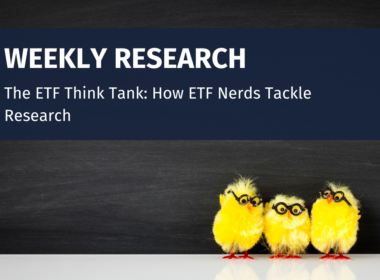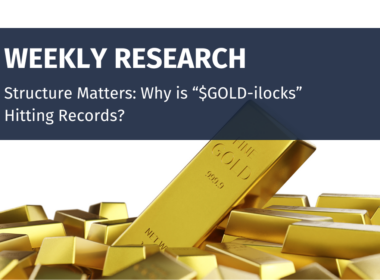A real estate investment trust, or REIT, is a company that owns, and in most cases, operates income-producing real estate. Some REITs also engage in financing real estate or mortgages. As of the end of 2012, the total market capitalization of US REITs was over $600 billion, most of which is publicly traded. This is far greater than the previous high in 2006 when REITs were $438 billion and is more than three times the recent low of 191 billion in 2008. This tremendous growth has come from share issuance, strong performance, index based demand and investor desire for yield. In my opinion, the valuations of many large publicly traded REITs now appear unsustainable for some of the observations described below.
Fundamentals
To qualify as a REIT, a company must have most of its assets and income tied to real estate investments and must distribute annually at least 90 percent of its taxable income to shareholders, in the form of dividends – thereby drawing investors to REITs for their yield and possibly de-valuing the importance of the fundamentals. A company that qualifies as a REIT is permitted to deduct dividends paid to its shareholders from its corporate taxable income. As a result, most REITs historically remit 100 percent of their taxable income to their shareholders and therefore owe no corporate tax. [1] This is why most REITs’ finance their growth through share issuance and historically trade with fundamentals that look very different from the market. However, it appears we are now reaching the extremes of relative fundamentals when compared to the market. As of April 29, 2013 VNQ, the largest and most commonly held REIT ETF issued by Vanguard, was trading at 48 P/E and 6.2 times sales as compared to the S&P 500 Index at a 14 P/E and 1.5 times sales.
Yield and Tax Impact
Due to the REIT structure, taxes are paid by shareholders on the dividends received. For REITs, dividend distributions for tax purposes are allocated to ordinary income, capital gains and return of capital, each of which may be taxed at a different rate. This means that the 3.4% Yield on VNQ as reported on April 29, 2013, which is taxed as ordinary income, is only slightly higher than the 2.3% yield of SPY, the ETF issued by State Street Global Advisors that strives to replicate the S&P 500 Index, which is taxed as a qualified dividend at 15%. Additionally, compared to many dividend-focused ETFs, which offer qualified yields from 2.5% to 4.2%, the taxable investor receives almost no accretive yield from an investment in VNQ because of this tax treatment.
The ETF Effect – Too Big for Its Own Good
The publicly traded US ETF REIT market is over $48 billion. [2] Over 71% of these assets are invested in two Vanguard products that act as one: VNQ (ETF) and VGSIX (mutual fund). Vanguard has a patent that allows them to comingle ETF assets with existing mutual fund assets that follow the same index, in this case the MSCI US REIT Index. Since VNQ and VGSIX are both passively managed and comprise 71% of the US ETF REIT market, it appears that a high percentage of investors have chosen to invest in REITs passively.
It should also be noted that VNQ and VGSIX’s unique structure obscures their true ownership of many securities. For example, the market capitalization of Simon Property Group (SPG) is 9.9% owned by REIT ETFs. [3] This is alarming because ETFs only represent 3.5% of our investable universe and, on average, only own 3.3% of most large capitalization equities. As of March 31, 2013, however, VNQ and VGSIX collectively owned 6.92% of SPG. Therefore, Vanguard’s passive index investing approach combined with the popularity of their REIT ETF and mutual fund appears to have created an over exposure to SPG, an anomaly worth careful monitoring.
Digging deeper, Vanguard reported in its December 2012 SEC 13F filing that ownership by Vanguard clients and funds in SPG was almost 13%, so it appears a high percentage of investors by virtue of hiring Vanguard or investing in its funds have chosen to invest in REITs passively, and Toroso believes that this why the fundamentals appear so inefficient and overvalued.
Investors must remember that an index is simply a rule set and when assets flow passively to an asset class, dislocations can occur. For example, in the past year the Simon family has sold well over a half billion dollars of SPG equity, according to SEC filings. This has increased the share float and therefore the weight of SPG in the MSCI index thereby increasing demand for shares by the ETFs. Toroso believes this demand for REIT exposure has resulted in unjustified fundamentals that don’t support the risk associated with the less than attractive yield.
The Other Reason to Own REITs
We have already discussed yield, which is a primary reason most investors look to REITs, but there is another purpose they serve in portfolios that is even more dependent on relative fundamentals. REITs are often held as an alternative or inflation beneficiary. In theory, higher rent and property values will be passed on to investors if we enter an inflationary environment. In recovery mode, over many years, the Federal Reserve will be forced to combat inflation by raising interest rates. This will negatively affect REITs in two distinct ways: first, they will be forced to compete with more normalized fixed income yields, and second they will likely experience P/E contraction. Essentially, the underlining assets may appreciate commensurate with inflation but the experience of the large capitalization REIT investor may be very different if the P/E contracts.
Consider this real-life example from the 70s – an investor looking for exposure to gold in 1970 may have purchased Newmont Mining (NEM) for around $30 a share, which was the average trading price in 1970 according to Moody’s. The average trading price for gold in 1970 was $36.02 per ounce. 10 Years later, the price of gold was $306 an ounce, nearly a nine-fold increase. But, the average price of NEM was basically the same, because the P/E of NEM contracted from over 30 to a more normalized figure as interest rates rose. [4]
So despite the fact that we expect alternative asset classes like REITs to have different fundamentals than the market, we do not see how investors can expect those extreme valuations to be supported in an environment of rising rates.
Who Else Owns These REITs?
As noted above, ETFs, mutual funds and passive investing have created an over-exposure to REITs that concerns us. However, the more disturbing investment comes from Japan. In September of 2012, Goldman Sachs noted that Japanese mutual funds accounted for close to 11% of the ownership in many US REITs, or about $46 billion. The top Japanese funds have been yielding over 19% by distributing unrealized capital gains. This practice, which is uncommon in the US, will likely lead to significant out-flows if the capital appreciation of REITs slows or stops. The systematic investment in REITs appears to be based on a house of cards proliferated by index investing, share issuance and inflows supported by strong performance following 2008. Any disturbance in the linear nature of the performance of these equities is likely to result in a violent downturn in the asset class. [5]
In Conclusion
Although owning real estate is considered an important asset to have exposure to in most asset allocation funds, Toroso at this time has decided that the risks associated with the current valuations of the REIT market to be prohibitive and has opted for other assets in our portfolios. If and when valuations return to what we would consider reasonable levels, we will then consider adding REIT ETFs to our portfolios.
[1] REIT.COM – What is a REIT?
[2] ETFdb.com
[3] Toroso Research
[4] Studies in Absurdity Third Edition – Murray Stahl, page 102.
[5] Americas: Real Estate: REITs, Goldman Sachs, 2012
Disclosure
All investments involve risk, including possible loss of principal.
This material is provided for informational purposes only and should not be considered an individualized recommendation or personalized investment advice. The investment strategies mentioned may not be suitable for everyone. Each investor needs to review an investment strategy for his or her own particular situation before making any investment decision.
All expressions of opinion are subject to change without notice in reaction to shifting market conditions. Data contained herein from third party providers is obtained from what are considered reliable sources. However, its accuracy, completeness or reliability cannot be guaranteed.
Examples provided are for illustrative purposes only and not intended to be reflective of results you can expect to achieve.
The value of investments and the income from them can go down as well as up and investors may not get back the amounts originally invested, and can be affected by changes in interest rates, in exchange rates, general market conditions, political, social and economic developments and other variable factors. Investment involves risks including but not limited to, possible delays in payments and loss of income or capital. Neither Toroso nor any of its affiliates guarantees any rate of return or the return of capital invested. This commentary material is available for informational purposes only and nothing herein constitutes an offer to sell or a solicitation of an offer to buy any security and nothing herein should be construed as such. All investment strategies and investments involve risk of loss, including the possible loss of all amounts invested, and nothing herein should be construed as a guarantee of any specific outcome or profit. While we have gathered the information presented herein from sources that we believe to be reliable, we cannot guarantee the accuracy or completeness of the information presented and the information presented should not be relied upon as such. Any opinions expressed herein are our opinions and are current only as of the date of distribution, and are subject to change without notice. We disclaim any obligation to provide revised opinions in the event of changed circumstances.
The information in this material is confidential and proprietary and may not be used other than by the intended user. Neither Toroso or its affiliates or any of their officers or employees of Toroso accepts any liability whatsoever for any loss arising from any use of this material or its contents. This material may not be reproduced, distributed or published without prior written permission from Toroso. Distribution of this material may be restricted in certain jurisdictions. Any persons coming into possession of this material should seek advice for details of and observe such restrictions (if any).












